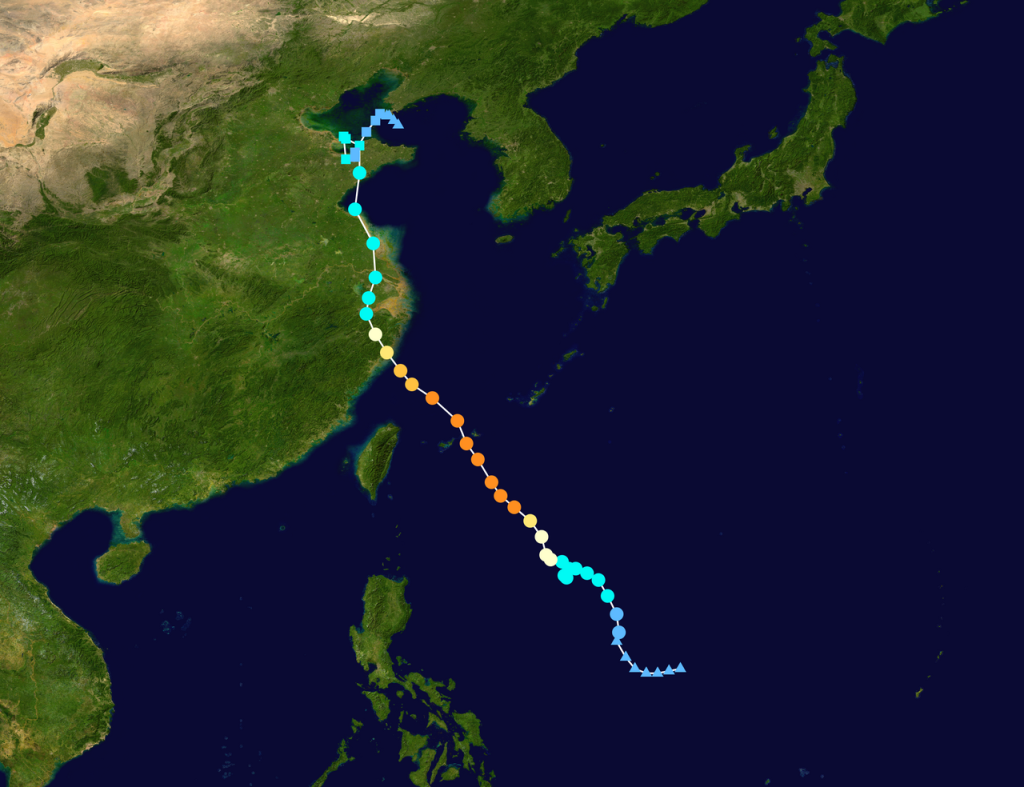
Understanding Typhoon Disasters: A Leap Forward with TDSIE
Typhoons, nature’s formidable phenomena, have become increasingly frequent and destructive, especially in Asia. Understanding their complex behavior is not just a scientific challenge but a dire necessity for disaster management and public safety. Enter the Typhoon Disaster State Information Extraction (TDSIE) method, a groundbreaking approach outlined in a recent scientific paper. This method promises to transform how we understand and predict the behavior of typhoons, making significant strides in disaster preparedness.
The Typhoon Challenge
Traditionally, information about typhoon disasters is scattered and complex, making it difficult to analyze and predict their behavior accurately. The TDSIE method offers a solution by extracting comprehensive data from various sources, primarily focusing on Chinese texts.
How Does TDSIE Work?
- Spatio-Temporal Tagging: The first step involves analyzing texts and identifying specific information about time and location – key aspects of understanding any natural disaster.
- Semantic Analysis: By building a semantic vector for typhoon-related terms, TDSIE can pinpoint crucial elements of a typhoon’s state.
- Co-referential Fusion: This involves combining related information from various sources to provide a fuller picture of the typhoon’s state.
Why is TDSIE a Game-Changer?
- High Precision and Recall Rates: With over 85% efficiency, TDSIE proves to be a reliable method for extracting disaster-related information.
- Multi-scale Analysis: It allows for analysis at different scales, giving detailed insights into the patterns and evolution of typhoons.
- Valuable for Disaster Management: By providing a comprehensive understanding of typhoons, TDSIE can greatly aid in disaster preparedness and response.
Real-world Application: Typhoon Lekima Case Study
Typhoon Lekima provided an ideal scenario to test the capabilities of the TDSIE method. This typhoon was selected for the case study due to its impact and complexity

How TDSIE was Applied:
- Data Extraction: Researchers used TDSIE to extract information from various textual sources, such as news reports and online articles, focusing on the details relevant to Typhoon Lekima. This included information about the typhoon’s path, its intensity at different times and locations, and the impact it had on different regions.
- Analysis of Typhoon’s Path: Using the TDSIE method, researchers could track the trajectory of Typhoon Lekima. This tracking wasn’t just about the geographical route but also included changes in the typhoon’s intensity and characteristics over time and space. For instance, they could determine where and when the typhoon reached its peak intensity.
- Intensity and Impact Evaluation: TDSIE enabled a detailed analysis of the typhoon’s intensity – like wind speeds and pressure levels at different stages of its path. Additionally, the method helped in assessing the impact level in various affected areas, such as infrastructural damages or flooding levels.
Implications for Disaster Response and Policy Making:
- Informed Decision-Making: The insights gained from this analysis were critical for disaster response teams. Understanding the path and intensity of the typhoon helped in planning evacuation routes, deploying emergency services efficiently, and allocating resources where they were needed the most.
- Policy Development: For policymakers, this case study demonstrated how TDSIE could be a powerful tool in disaster management planning. The ability to analyze a typhoon’s behavior in such detail is invaluable for developing more effective disaster preparedness strategies, improving infrastructure resilience, and formulating policies for future disaster response.
- Enhancing Emergency Responses: The case study of Typhoon Lekima showed that TDSIE could significantly contribute to real-time emergency response mechanisms. By providing accurate and detailed information quickly, it enables a more proactive approach to handling the challenges posed by such natural disasters.
Future Directions:
Looking ahead, enhancing the precision of TDSIE and adapting it for other types of natural disasters could revolutionize our approach to disaster management. The TDSIE method marks a significant advancement in our ability to understand and manage typhoon disasters. By leveraging advanced data extraction and analysis techniques, it opens new avenues for research and practical disaster management.
What are your thoughts on TDSIE and its potential impact on disaster management? Share your views in the comments below!
Explore, Learn, and Grow with Science:
Step into the realm of discovery with ‘This Week in Science’! Tailored for both educators and science enthusiasts, our newsletter offers a weekly exploration of groundbreaking research and inspiring stories from the scientific community. By subscribing, you’re not just reading – you’re expanding your horizons in teaching and learning. Join us for free and start a journey that reshapes your engagement with science, fostering a more informed and passionate approach.
About the Author
Jon Scaccia, with a Ph.D. in clinical-community psychology and a research fellowship at the US Department of Health and Human Services, is renowned for his expertise in public health systems and quality programs. He specializes in implementing innovative, data-informed strategies to enhance community health and development. Jon’s significant contribution to public health is underscored by his creation of the R=MC² readiness model, which aids organizations in effectively navigating change. He’s lived through more hurricanes than he can count (well, maybe 7 of them?)



